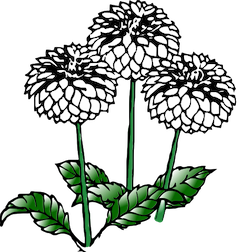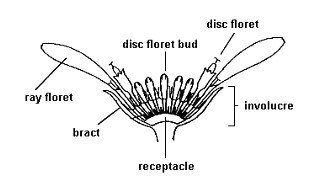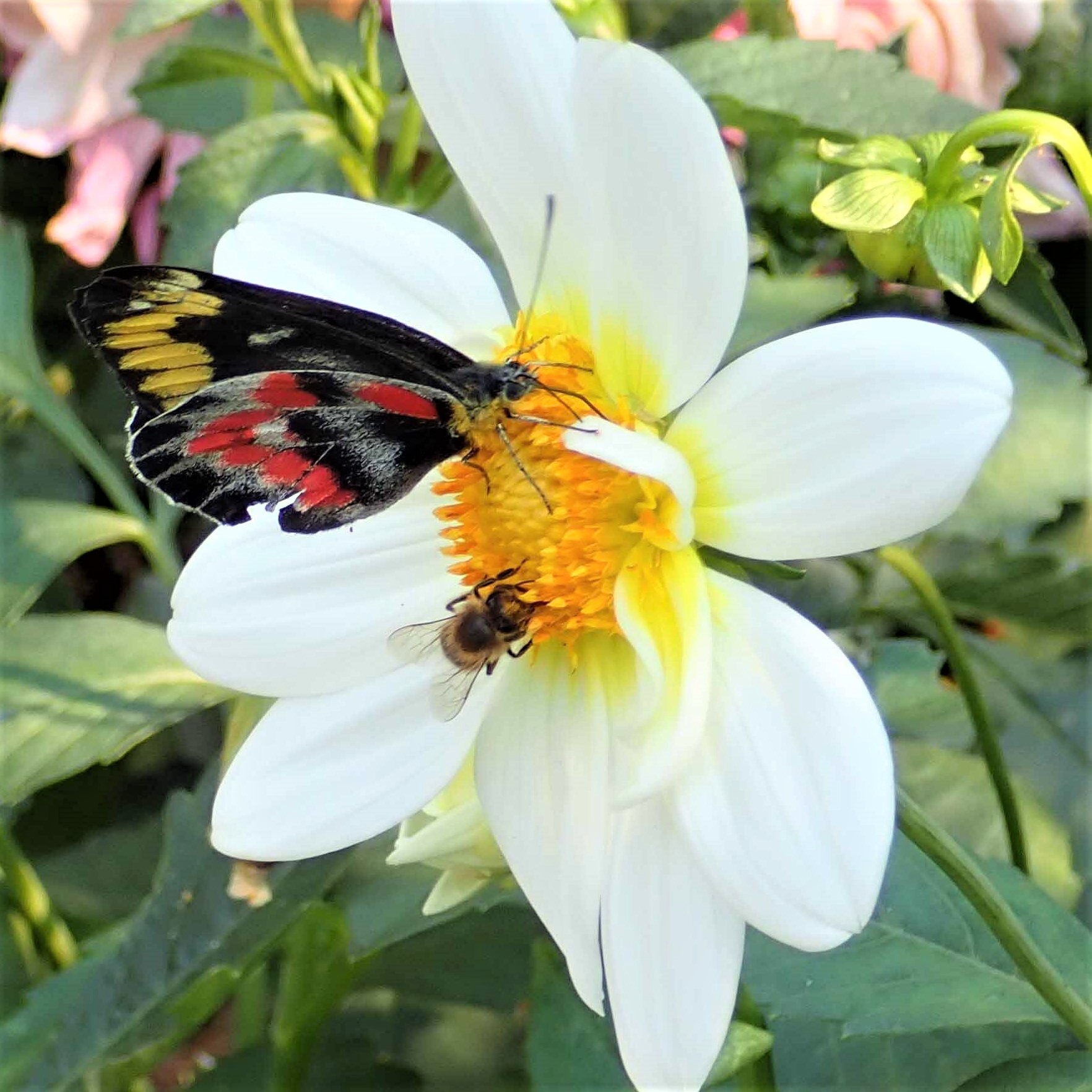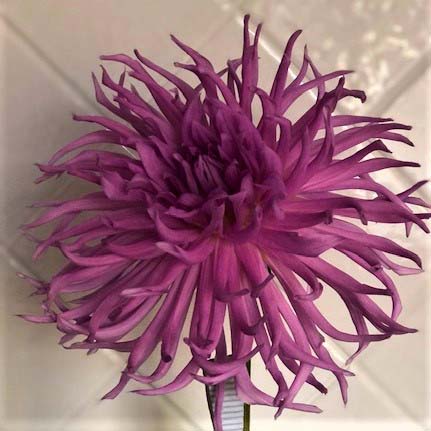 | dahlia society of victoria | LOGIN: |
|
DAHLIA GENETICS |
Dahlias are native to central America, mainly the high plains of Mexico. Some species are found in Guatemala, Honduras, Nicaragua, El Salvador and Costa Rica, possibly introduced by the Toltecs. There are over 40 recognised species. The Dahlia genus belongs in the botanical family Asteraceae (formerly Compositae – the daisies). Close relatives are Bidens, Coreopsis and Cosmos. Like all living organisms that reproduce sexually, dahlias produce new offspring through pairing between two sets of DNA contained in the parent’s chromosomes. Most living species, including humans, are diploid, with two sets of chromosomes. Most dahlias are octoploids with eight sets of chromosomes, resulting in far greater variability in the offspring. Dahlias also contain many transposons, “jumping genes” that move from place to place in the DNA sequence, which adds to their diversity. Plant and animal hybrids are normally sterile but one consequence of extra chromosome sets is the capacity for hybrid offspring that can reproduce sexually. This characteristic adds further to the rapidity with which new varieties are produced and also means that historically distinguishing species from hybrids has been difficult. |
| Like most members of the daisy family each dahlia plant has two types of flower heads - disc florets and ray florets. The ray florets are what we usually (and wrongly) call the petals. The disc florets, small flowers with tubular corollas, make up the inner part of the flower head. The disc is where the seeds develop after pollination. |
The female parts of the flower do not accept the plant’s own pollen. Bees, butterflies and other pollinators will normally introduce pollen from different plants and take pollen away to deposit elsewhere. This combination of multiple parents and complex genetics produces the incredible variability we see in dahlia shape, colour and size. Each disc is made up of from 110 to 150 corollas which could produce seeds when fertilised. In nature the seed pod normally contains from 25 to 50 seeds, none of which is likely to produce the same result when sown and grown on. |
|
| Breeders have taken advantage of the dahlia genetics to produce huge numbers of colours and forms. More than 17,000 cultivars are registered with the Royal Horticultural Society (RHS). If you are interested in exploring the opportunities to create new varieties, look at our advice on growing from seed. Insects are attracted by colour, not scent, so the best efforts of breeders to produce a fragrant variety have had no real success. This reliance on colour rather than scent to attract pollinators is why there is a huge range of colours and combinations to be found. Like the rose, the dahlia has no gene to express the colour blue, although many violet and mauve cultivars have been produced. |


